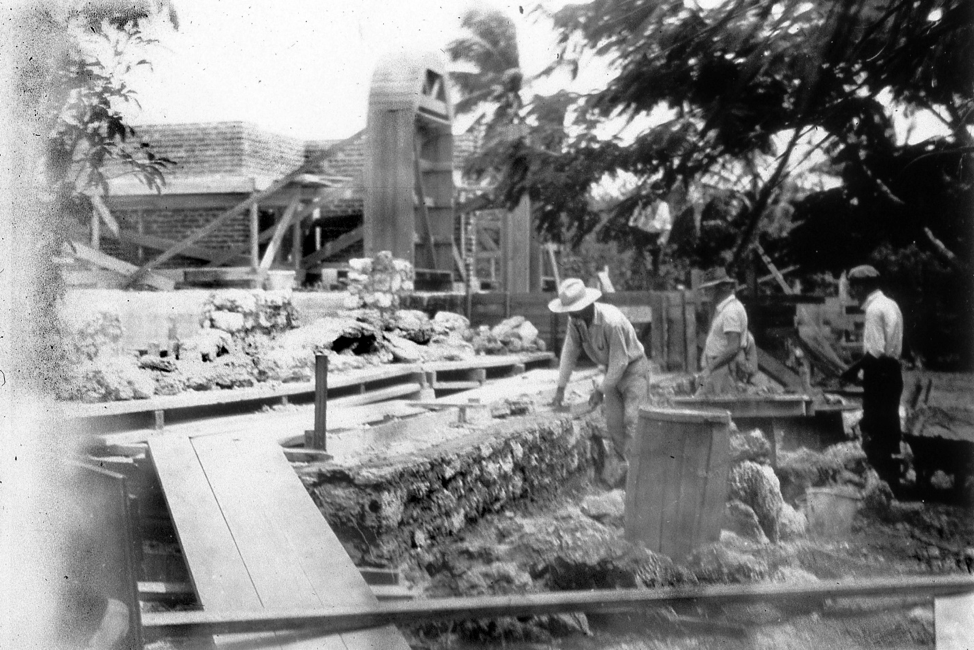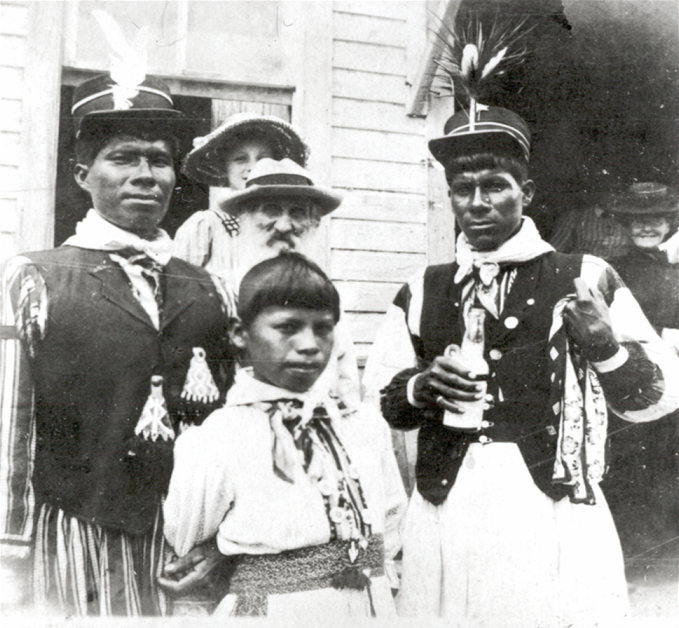
Karina Gonzalez is a senior at Florida International University pursuing a degree in Political Science with a certificate in National Security Studies.
Being raised a Cuban-American atmosphere, Karina shares a passion for learning about different types of cultures and learning about historical events. She is passionate about human rights and learning all sides of history and traveling to meet different people and places. She aspires for a career in the Federal Bureau of Investigation, maintaining the security of individuals and the United States of America. She hopes to share the things she learns around the world with others who share the same passions!
“A Hike through History” by Karina Gonzalez of FIU at Deering Estate as Text January 28, 2022
The 444-acre of land occupying Deering Estate continues to preserve the 1920’s era of Miami. Founded by Charles Deering in the early 1900’s, Deering Estate has served as home to eight different ecosystems and continues to serve as a historic landmark open to the public.
LOCATION/ACCESS:
Located in South Florida, Deering Estate is accessible by car. Parking is free and generous in space!
Visit https://deeringestate.org/plan-your-visit/ for more information on transportation and details on admission cost
Contact Information
Deering Estate Contact
Visit Soon!
Office Hours: 10:00am-4:00pm
Visitors Hours: 10:00am-5:00pm
HISTORY:
Charles Deering and James Deering both fell in love with South Florida while visiting their father, William Deering, in the early 1900’s. Infatuated with the cites of South Florida, both brothers soon became owners of distinctive cites in the area. James chose a site, now known as Vizcaya, near his fathers winter home; while, Charles chose a more remote site, now known as Bay Point, but sold the property due to the intrusion of civilization. Charles Deering yearned for a more isolated site, away from the disruptions of civilization. Which is exactly what he achieved when he purchased the Cutler property between 1913-1918 and built Deering Estate by 1922.
For more information on the Deering Family, visit https://www.dbycc.com/custom/legacy.html


Retrieved from: https://deeringestate.org/history/historic-structures/
Although Deering Estate was home to a wealthy Chicago industrialist, there are various influences found throughout the architecture of the estate. A large amount of the architecture in the estate was heavily influenced by Mediterranean, Italian, Spanish, East Asia, and even Islamic influence!

“Some characteristics of Islamic architecture were inherited from pre-Islamic architecture of that region while some characteristics like minarets, muqarnas, arabesque, Islamic geometric motifs, pointed arch, multifoil arch, onion dome and pointed dome developed later.” Retrieved from: https://www.google.com/url?sa=t&rct=j&q=&esrc=s&source=web&cd=&cad=rja&uact=8&ved=2ahUKEwialOiLte71AhXzQzABHVCABHEQFnoECBIQAw&url=https%3A%2F%2Fen.wikipedia.org%2Fwiki%2FIslamic_architecture&usg=AOvVaw1ts13Z_H-tUOcb9lr0WdYB
BUILDERS/Inhabitants:
Before the arrival of Charles Deering, the estate area had history of habitation from Floridian native Americans. The land was originally occupied by Paleo-Indians, followed by the Tequesta and the Seminole. Archeologists have been able to date back fossil remains from about 10,000 years ago! Although Spanish influence in the mid-18th century pushed many Native Americans out of the region, it is still crucial to acknowledge the Native culture in the area.
With that in mind, Deering Estate was built many years after the Civil War had ended, but racism and racial segregation was still very common. Although we now occupy a more modern time period, at the time many of the workers of Deering Estate were Afro-Bahamians seeking work in the area. With a lack of advanced technology during the time of construction, many of these workers faced dangers and critical working conditions. In one instance, during the drilling of the Deering Canal, the use of dynamites set an unfortunate explosion that led to the death of four Afro-Bahamian workers and critically injured five workers.
A HIKE THROUGH HISTORY:
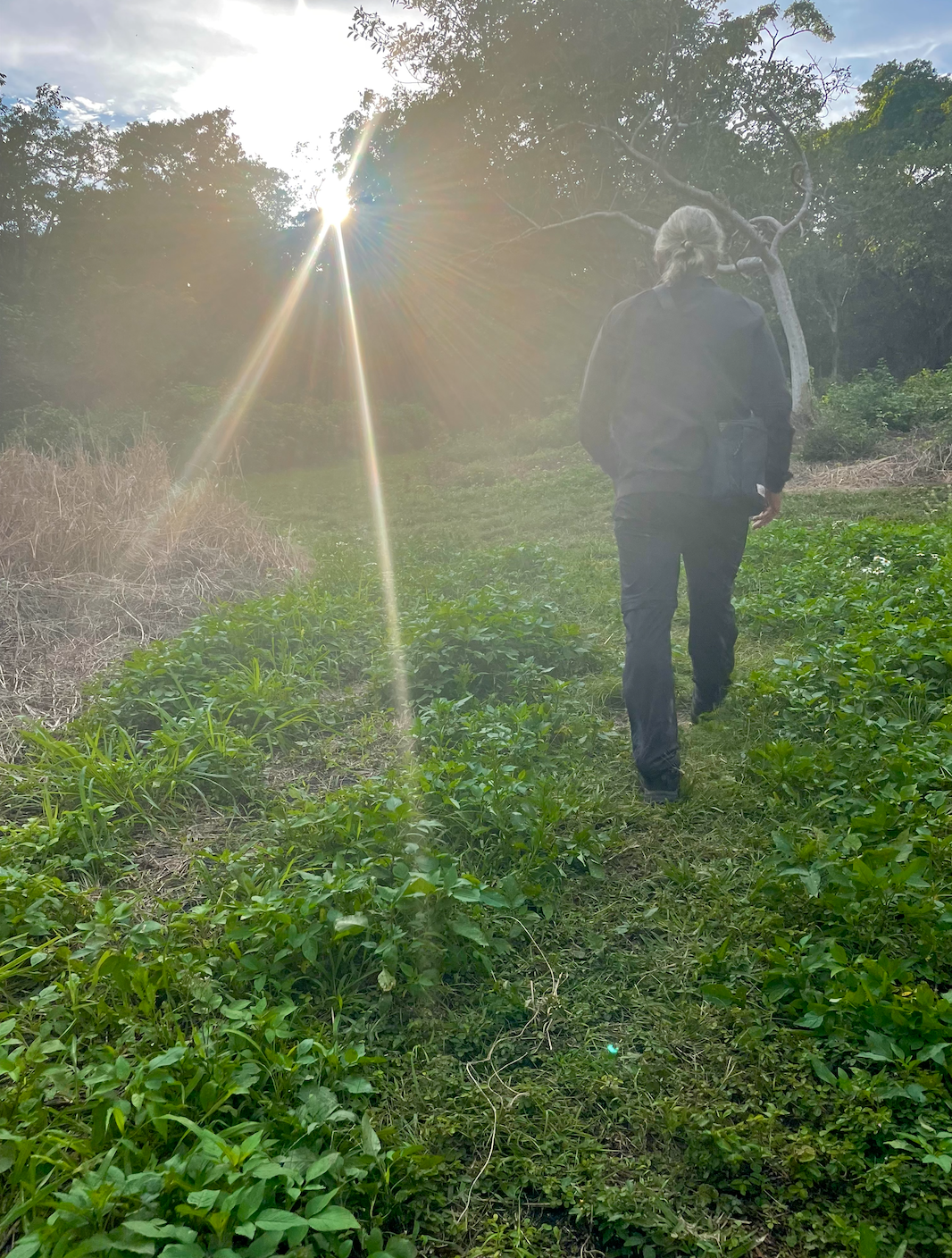




Deering Estate is not only a historic site to the members of South Florida, but it is also home to about eight different ecosystems in its nature preserve:
- Pine Rockland
- Salt Marsh
- Mangroves
- Submerged Sea Grass Beds
- Deering Estate Flow-way
- Remnant Slough
- Tropical Hardwood Hammock
- Beach Dune Chicken Key
Charles Deering was an environmentalist in addition to being an industrialist; he shared the importance of preserving natural ecosystems and hoped to do the same within his estate.
“You can’t force people to care about our natural environment, but if you encourage them to connect with it, they just might.”
Jennifer Nini
The trail itself holds history! For example, within the trail, you come face to face with a hidden natural spring with surrounding Mangroves. At first glance, it wouldn’t seem like a historic phenomenon, but the reality could not be more wrong.
When the Tequesta resided in the South Florida area, they had created a civilization for themselves. In order for civilization to even occur, there must be a means of natural resources that the Tequesta could have access to- this natural spring was one of the resources. The spring shown on the second image is crystal clear and even has live fish inhabiting!
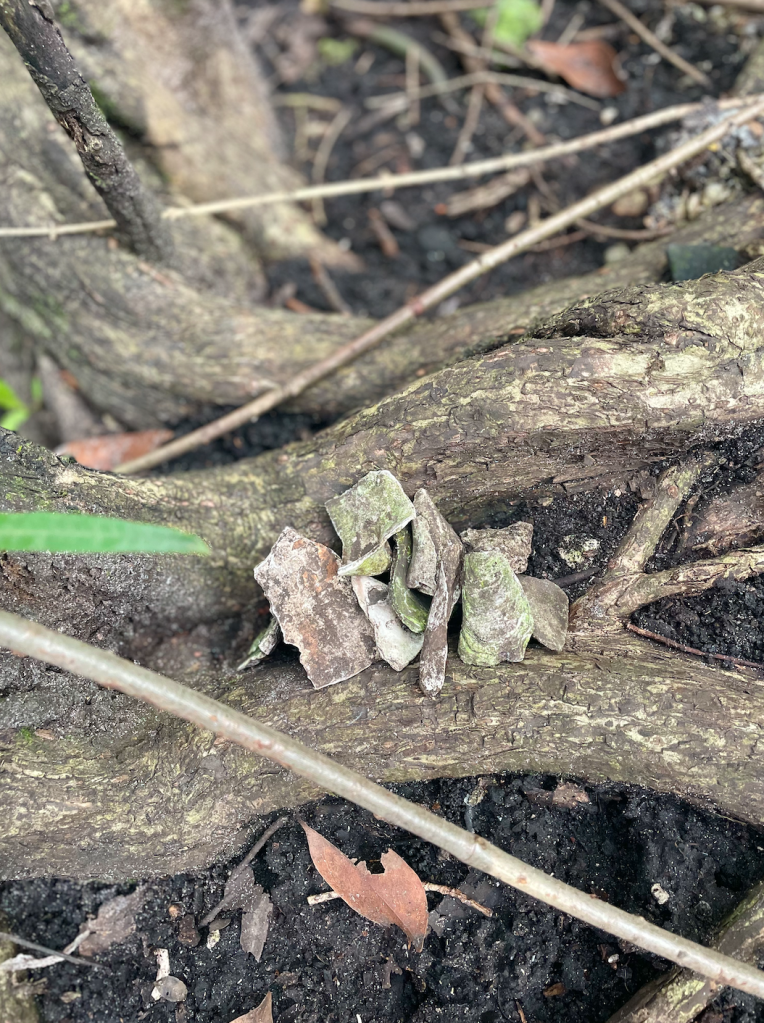

Within the trail, there is also a natural solution hole- likely to have been formed from erosion. Solution holes provide shelter and food for various animals because of their ample space. As shown in the bottom left image from above, this specific solution hole is surrounded by limestone; likely showing that the solution hole was created over the course of many years.
SACRED GROUND:
As mentioned earlier: “Before the arrival of Charles Deering, the estate area had history of habitation from Floridian native Americans. The land was originally occupied by Paleo-Indians, followed by the Tequesta and the Seminole. Archeologists have been able to date back fossil remains from about 10,000 years ago! Although Spanish influence in the mid-18th century pushed many Native Americans out of the region, it is still crucial to acknowledge the Native culture in the area.”
Although in today’s day and age, various Tequesta tribe members migrated into other tribes such as the Miccosukee and the Seminoles, Deering Estate still serves as a sacred location for some of these tribes.
In fact, towards the end of the trail within the Estate, there is a section that is considered “sacred land,” to the native Miccosukee tribe. Within the sacred land, landscaping is prohibited. This land serves as sacred ground for the previous native Americans that once resided within the region.
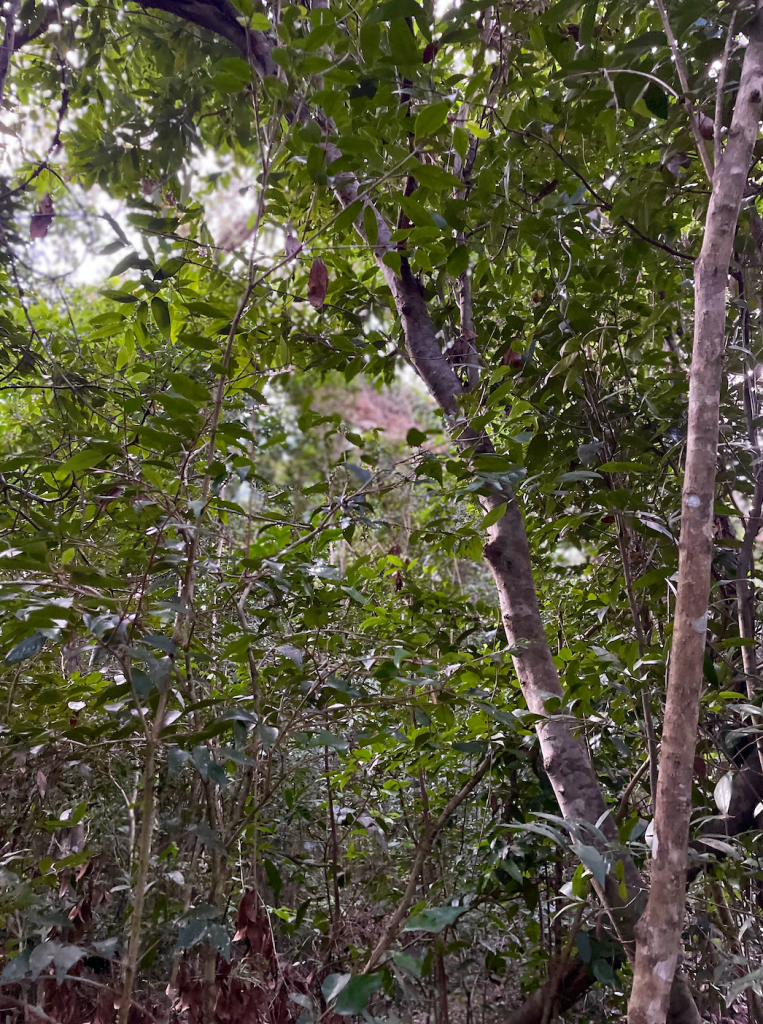
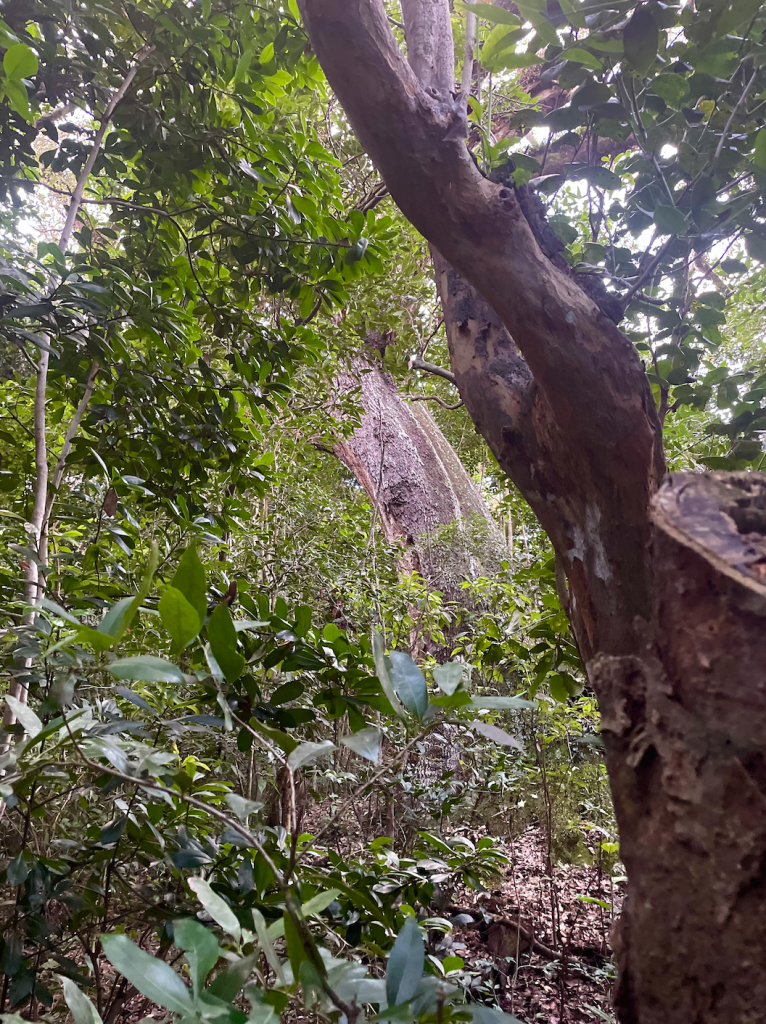
FUTURE GOALS:
The foundation of Deering Estate hopes “to raise public awareness, outreach, understanding and the enjoyment of the Deering Estate and to raise funds to support education, research, exhibits and collections, natural conservation and historical restoration and preservation.”
However, one of the best ways to begin writing history, is by teaching the full history– regardless of whether the truth is pretty or ugly. One of the future projects the Foundation is focusing on is bringing light the true builders of Deering Estate: the Bahamian workers. Though the Estate is famously known throughout Miami and South Florida, the builders and their own history is not.
Similarly, history has begun to be shined on previous members involved with the creation of Deering Estate in “Carl Kesser[‘s] film project [involving] extensive research, including trips to Chicago, Sarasota, Barcelona and Sitges, Spain and interviews with historians, archaeologists, a former governor and descendants of Charles Deering.”
Information retrieved from https://deeringestate.org/foundation/
“A Golden Gaze” by Karina Gonzalez of FIU at Vizcaya Museum and Gardens as Text February 18, 2022
Visiting the Vizcaya mansion and learning about its history and development put a lot of things into perspective for me as someone who was raised in Miami her entire life. I gained some insight on why Miami is the way it is. We are a city popularized by our rich food, diverse culture, and primarily our party night life. James Deering, former owner of Vizcaya Museum and Gardens, was a businessman who embraced his bachelor lifestyle through luxury and stature. Vizcaya, strategically placed on Miami’s Biscayne Bay was the beginning of the reputation of the Miami night life we know and love today.
James Deering was a socialite and an antiquities collector. His personality is seen through the rococo décor scattered throughout the villa, as well as through his grand garden which stretches across acres on acres. Vizcaya Museum and Gardens became a historic landmark. As breathtaking as Vizcaya is there is no questioning the fact that black Bahamians shaped Miami and put their blood, sweat, and tears into constructing these significant landmarks such as Deering Estate and Vizcaya. When the Bahamian economy collapsed in the 1870’s, Bahamians sought agricultural work in Florida. Unfortunately, they endured terrible work conditions and treatment here. Till this day many descendants of Vizcaya’s workers continue to feel a sense of distance and looming sense of unwelcomeness by the estate itself.
On the other hand, those who do resonate deeply with Vizcaya Museum and Gardens, enjoy the villa because of its beauty and grace.
The entire estate itself has personality. Deering and his head decorator, Paul Chalfin’s, attention to detail for the exterior and interior design, as well as the Bahamian workers sturdy hands, manifested a location that is visited by millions of tourists and showcased by locals for a variety of meaningful occasions such as weddings, quinces pictures, and plenty other special events. One of my favorite parts about Vizcaya was the entrance. A large statue of Ponce de Leon with a globe at his feet greets guests as they make their way into the estate, as well as a statue of the imaginary explorer Deering invented called “Bel Vizcaya.”
James Deering had a quite an ego, and this is seen through the symbolism behind his Ponce de Leon statue. He wanted to conquer Miami using his fortune from agricultural machinery and make it his own, which is why he identified himself as Ponce de Leon. The globe at Ponce de Leon’s feet is marked to show that Vizcaya is superior compared to other locations in the world. To an extent, there is a beauty that can be seen by the high praise Deering casted upon himself and Miami at the time.
Like many others throughout history, King Louise XIV, Deering’s persona reflected the same ambitions. Deering was rich and ready for a good time, which is reflected in his Bacchus, the god of wine and ecstasy, statue. Grand trees and full bushes act as theater curtains that frame the back of the Vizcaya home. Fountains are positioned on both sides of the road like a red carpet guiding you towards the house. Both Chalfin and Deering were not afraid to travel and purchase all types of antiques from a variety of cultures to emphasize the estates prestige and grandeur.
“The Silently Loud Scream of Miami’s History” by Karina Gonzalez of FIU at Downtown Miami as Text March 11, 2022
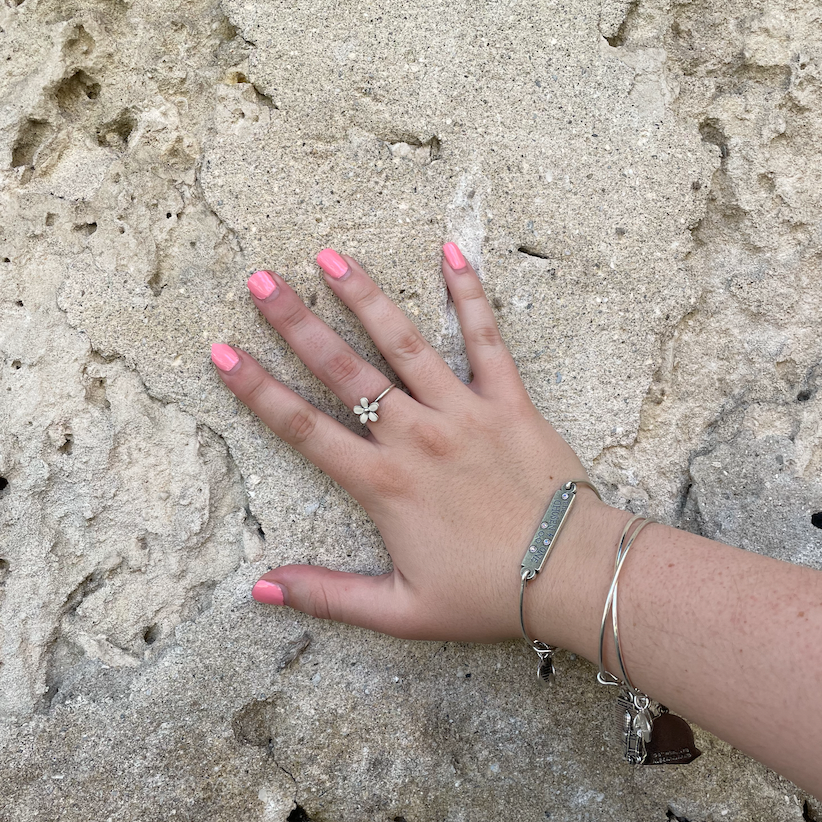


Since 1836, Miami-Dade has held its county name throughout South Florida. However, like many other landmarks throughout Florida, Dade-county had long been standing since before Major Francis Dade’s casualty during the second Seminole War of 1835.

Retrieved from https://miami-history.com/news/dade-massacre-in-1835/
The exposure of hidden truth within Miami was appalling, to a certain extent. Not because of the truth that was being uncovered, but because of why such truth was hidden in the first place. Similar to many historical events that have occurred throughout the past, Miami has its set of uncomfortable and progressive events.

One of the most eye-opening events that was not necessarily explained throughout public school, was the history of how Miami-Dade came to find its name. Off to the side of the Miami-Dade County Courthouse, is a plaque that pays tribute to Francis Dade stating that:
“[they were] ambushed by 200 Indians and negroes…”
For a city who claims to be progressive with equality of races, continuing to pay tribute to a Major, who is known for his lack of tactic and who murdered Native Americans who were habitants of the South Florida region, can be seen as a bit dehuminzing.
The same can be said for Henry Flagler, who played an even larger role in the segregation of Florida. You see, Florida was built from the blood and sweat of African American slaves. Throughout his lifetime, Flagler built an empire in Florida of railroads, hotels, steamship lines, resorts, even cities, from Jacksonville to Key West. But the empire Flagler built was not solely his to own. See, many of the workers have long since been forgotten in today’s day and age.
As South Florida continued to grow, the labor of African Americans continued to grow as well. As cities and communities developed, more and more African Americans contributed to the birth of what is now known as Overtown. At the time, Overtown was known as Color Town. Such section of the city initially was created by black workers who were in the process of building the City of Miami. But it was Henry Flagler who casted the vote to segregate and push these black workers out.


Continuing the walk through the streets of Miami, however, was not all so disappointing. For we came upon a remarkable honorary statue to the past: the Carbonell statue. Personally, one of my favorite honorary forms of art ever witnessed. Sculptor Manuel Carbonell created his version of what the Tequesta may have appeared as, early in the century. While there have been no recorded descriptions of the Tequesta family, it is known that the Tequestas served as one of the primary Native Americans to inhabit South Florida. As a token of respect to these Native Americans, a bronze-410 foot statue aims high towards the skies on the Brickell Avenue Bridge.

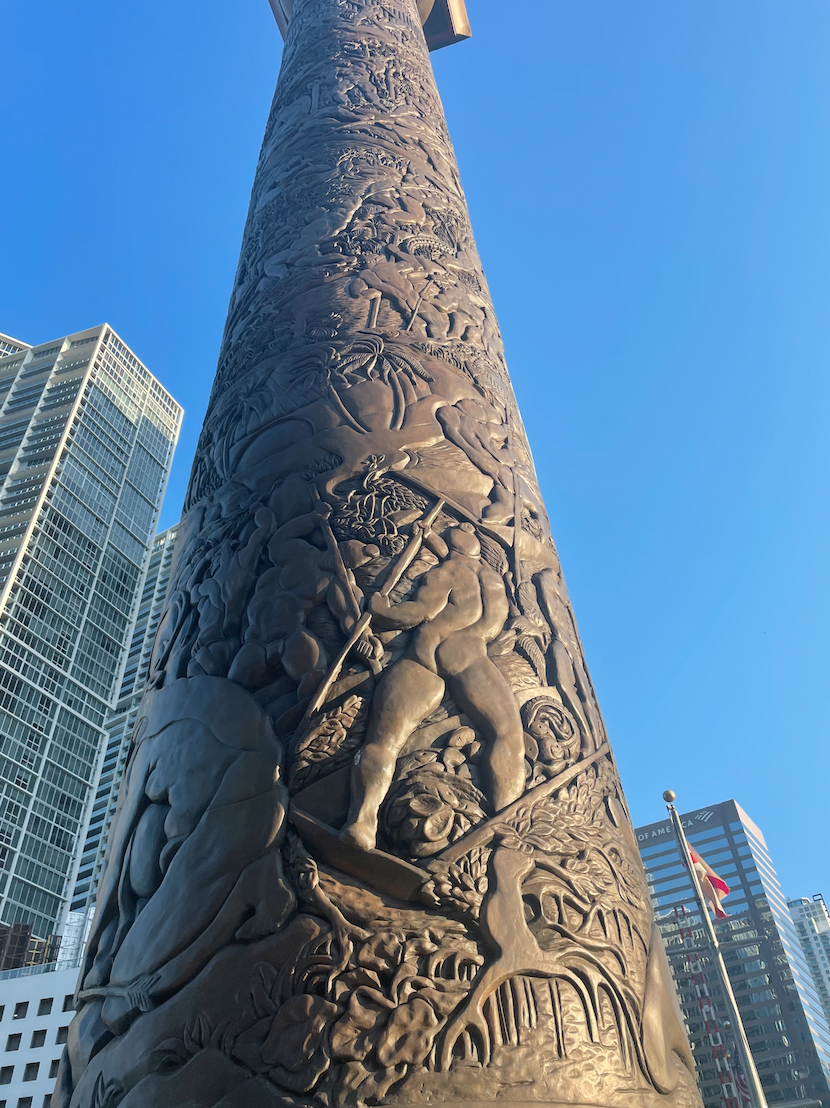
History, including the cruel and uncomfortable events that occurred, does not need to be erased. In fact, erasing past events and concealing the truth will only cause more harm than good. As a progressive society, especially one of Miami, we should be making efforts to acknowledge the events of the past and do well by them now.
Slavery occurred, segregation occurred, mass murders occured, humantiarians cruelties occurred; so why is it better to pretend that they did not?
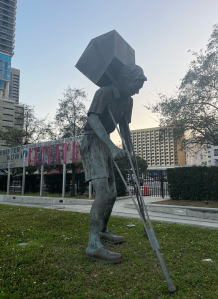
Miami welcomes its immigrant children and family with the long-standing Tower of Snow honoring the influx of migrants children during the Pedro Pan operation.


